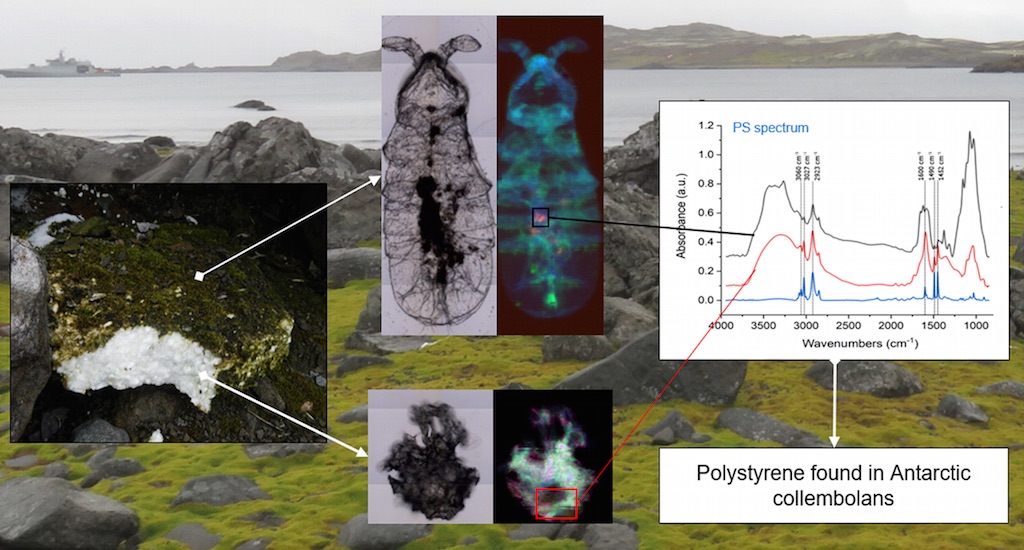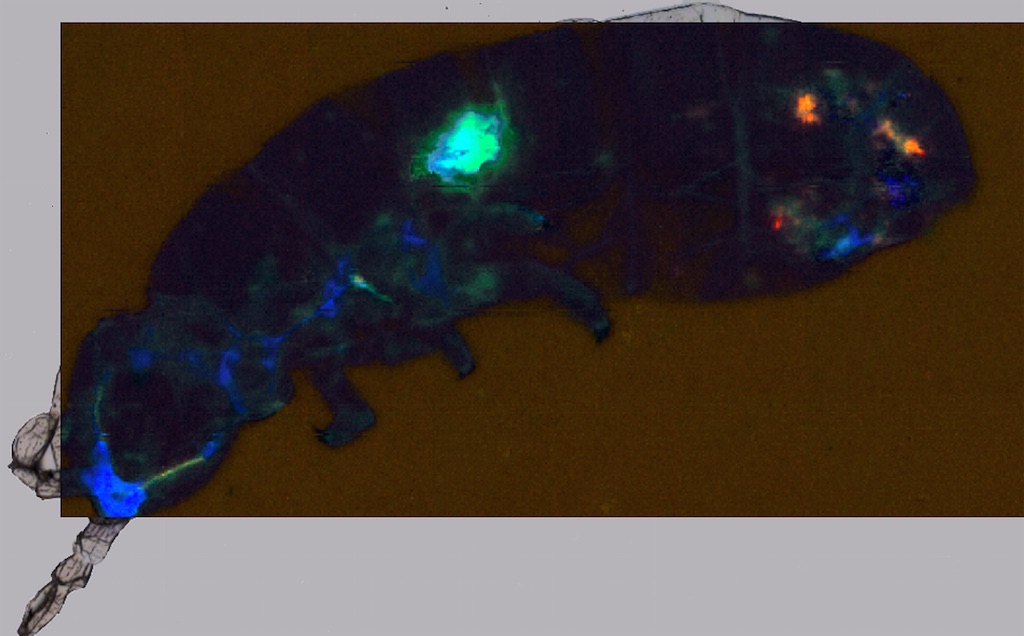Press release: Ecosystems at risk in Antarctica due to microplastics
Evidence is given by a recent study on small invertebrates in the South Pole.
“There is evidence and serious concern that microplastics have reached the most remote regions of the planet”. This is the incipit of the article recently published on the scientific journal Royal Society Biology Letters by an Italian research team led by Elisa Bergami and Ilaria Corsi, which has provided the first field-based evidence of contamination by microplastics in Antarctic terrestrial animals.

Before this field-based observation, “whether plastics are able to enter the Antarctic terrestrial food webs was still unknown” – the authors say. To find an answer, the researchers conducted an investigation starting from a large piece of polystyrene foam found in 2016 along the shores of King George Island (South Shetland Islands). Polystyrene foam was covered by algae, moss and lichens, which feed the 2-millimetre-small invertebrate Cryptopygus antarcticus (belonging to the Collembola group, otherwise known as springtails, a key component of the terrestrial food chain all around the globe).
The analysis of the collembolans found on the plastic material – which was carried out using the imaging technique with infrared spectroscopy at Elettra Sincrotrone Trieste, the Italian partner facility of CERIC-ERIC – allowed to identify the presence of polystyrene micro-fragments in the intestine of these invertebrates going beyond previous findings and analytical constraints on this insect group.

Microplastics can also transport contaminants and pathogens, which are potentially harmful to organisms such as Collembola and, consequently, to other species of the relative food web. Previous laboratory studies on other species of the Collembola group living in other areas of the globe also suggest that the exposure to microplastics can cause alterations in their growth and reproduction.
Given the large presence of Cryptopygus antarcticus in the Antarctic terrestrial environment, the ingestion of microplastics could contribute to their spread along the food chain in the South Pole, with potential risks for the entire ecosystem. Further studies are needed to better understand the possible environmental consequences due to the presence of microplastics, which have already deeply penetrated the soil and food webs.
The study was coordinated by Elisa Bergami and Ilaria Corsi from the University of Siena, with the valuable support of Emilia Rota from the same department, Giovanni Birarda and Lisa Vaccari from Elettra Sincrotrone Trieste and Tancredi Caruso from the University College Dublin.
The research was conducted in the framework of projects funded by the Italian national Antarctic research program (PNRA), with the support of the Brazilian Antarctic program (PROANTAR) and the Cilean Antarctic institute (INACH). Researchers also benefited from free access to the advanced instrumentation at the synchrotron in Trieste, thanks to one of the calls of the Central European Research Infrastructure Consortium, CERIC-ERIC.
- ORIGINAL ARTICLE
- PRESS KIT
- CONTACTS: CERIC Press Office – +39 338 17 61 632 / +39 334 90 24 929



